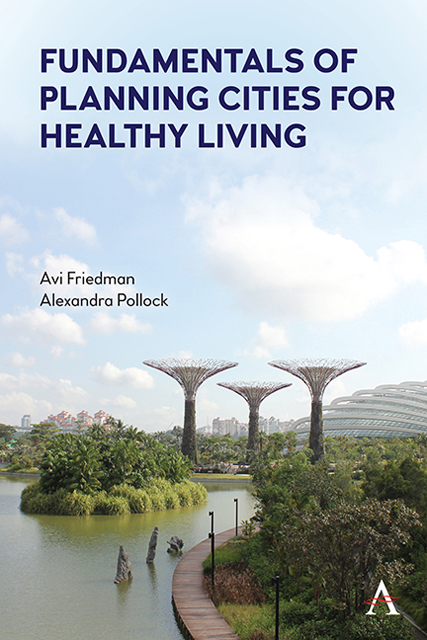Book contents
- Frontmatter
- Contents
- Preface
- Acknowledgments
- Chapter 1 The Broad View
- Chapter 2 Form, Function, and Public Health
- Chapter 3 Planning for Active Mobility
- Chapter 4 Green Open Spaces
- Chapter 5 Active Life in Winter Cities
- Chapter 6 Socializing in Communities
- Chapter 7 Food Production and Distribution
- Chapter 8 Urban Design for Healthy Aging
- Chapter 9 Public and Multi-Unit Residential Buildings and Public Health
- Chapter 10 Healthy Residences
- Chapter 11 Equitable Health Promotion
- Bibliography
- Bibliography for Case Studies
- Illustrations’ Credits
- Index
Preface
Published online by Cambridge University Press: 10 January 2023
- Frontmatter
- Contents
- Preface
- Acknowledgments
- Chapter 1 The Broad View
- Chapter 2 Form, Function, and Public Health
- Chapter 3 Planning for Active Mobility
- Chapter 4 Green Open Spaces
- Chapter 5 Active Life in Winter Cities
- Chapter 6 Socializing in Communities
- Chapter 7 Food Production and Distribution
- Chapter 8 Urban Design for Healthy Aging
- Chapter 9 Public and Multi-Unit Residential Buildings and Public Health
- Chapter 10 Healthy Residences
- Chapter 11 Equitable Health Promotion
- Bibliography
- Bibliography for Case Studies
- Illustrations’ Credits
- Index
Summary
Location affects how people move around, shop, and spend their leisure time. In some areas, decades of poor planning and architectural practices have contributed to unhealthy lifestyles, including a decline in physical activity and in-person social interaction to affect one’s mental health. In addition, many who live in underinvested urban neighborhoods lack the place, time, and resources to follow a healthy lifestyle because of social inequity and an inadequately built environment.
Another ominous sign is a troubling decline in public health worldwide. Recently, COVID-19 has made it clear that the virus is not the only threat to our collective well-being. Diabetes, to which obesity contributes, and asthma, all of which have been on the rise globally for decades, are listed as contributing causes to the pandemic’s fatalities. The most vulnerable members of society, people with preexisting conditions, the elderly, and low-income were disproportionately affected by the crisis.
The authors of this book argue and demonstrate that good urban design has the potential to be a powerful tool in health promotion. Introducing healthy food choices, pedestrian paths, safe bicycle lanes, and recreation areas near homes can have far-reaching effects on residents’ well-being. These measures can also play a role in combatting climate change and addressing social justice issues. The increased attention to public health as a result of the pandemic presents a unique opportunity for planners, architects, and public officials to reimagine cities and neighborhoods as devices for living well.
The authors advocate the retooling of existing environments and the planning of new ones with features that help tackle the current public health crises and set the stage for improved well-being. Some solutions draw from ninetieth-century urbanism, like placing public institutions in the hearth of communities while others involve new technologies such as the use of digital applications or a combination of both. Each chapter focuses on a specific aspect of city planning such as mobility and open spaces to present recent research on the topic and its relation to well-being.
The public health crises and the planning of today’s cities are closely linked to several highly important contemporary social challenges such as global warming, population aging, and income inequality.
- Type
- Chapter
- Information
- Fundamentals of Planning Cities for Healthy Living , pp. vii - xPublisher: Anthem PressPrint publication year: 2022

